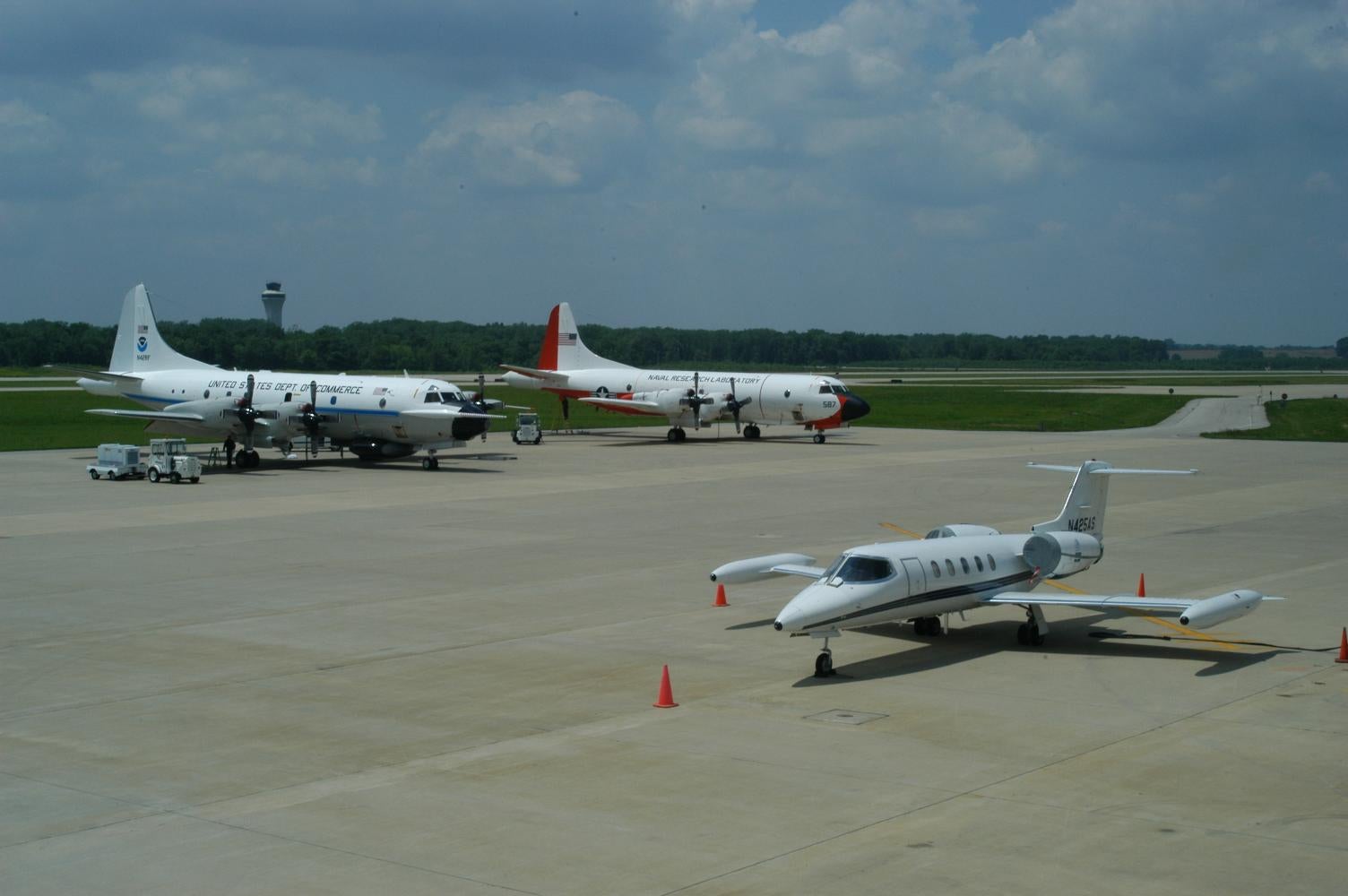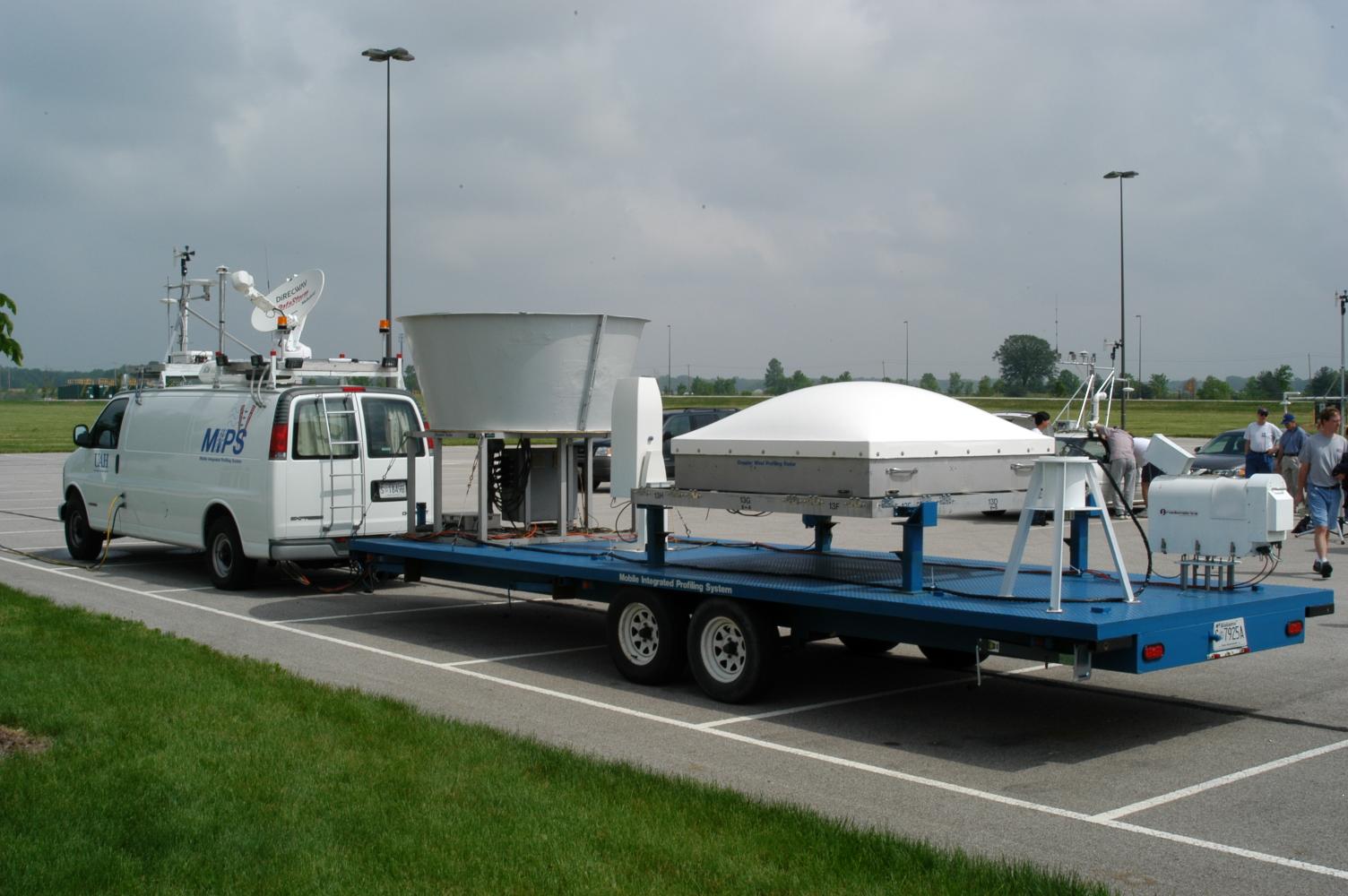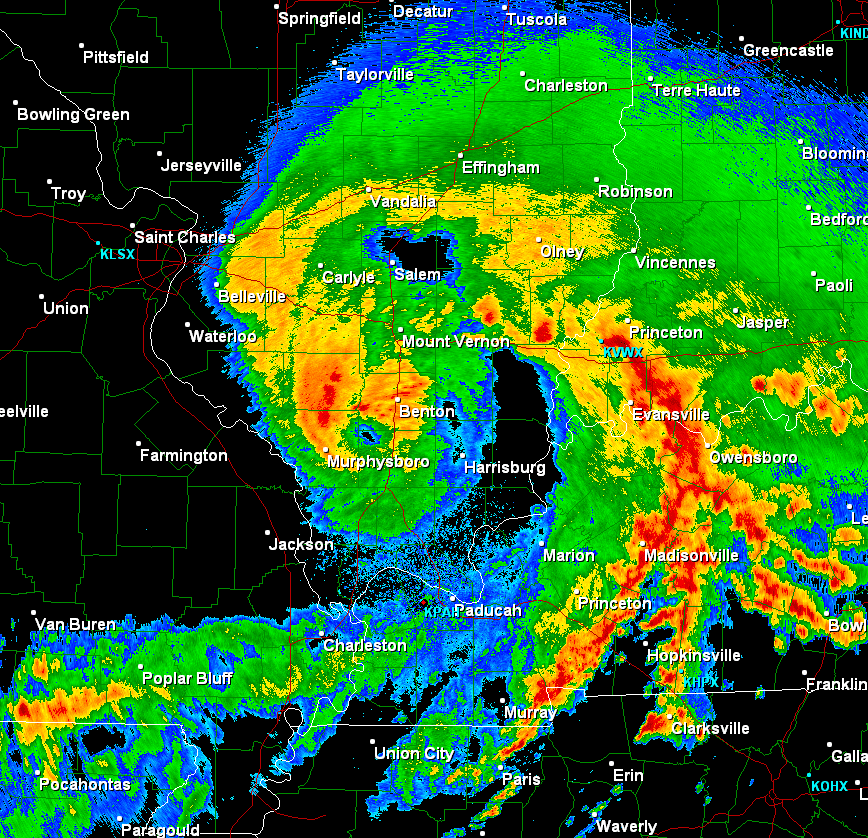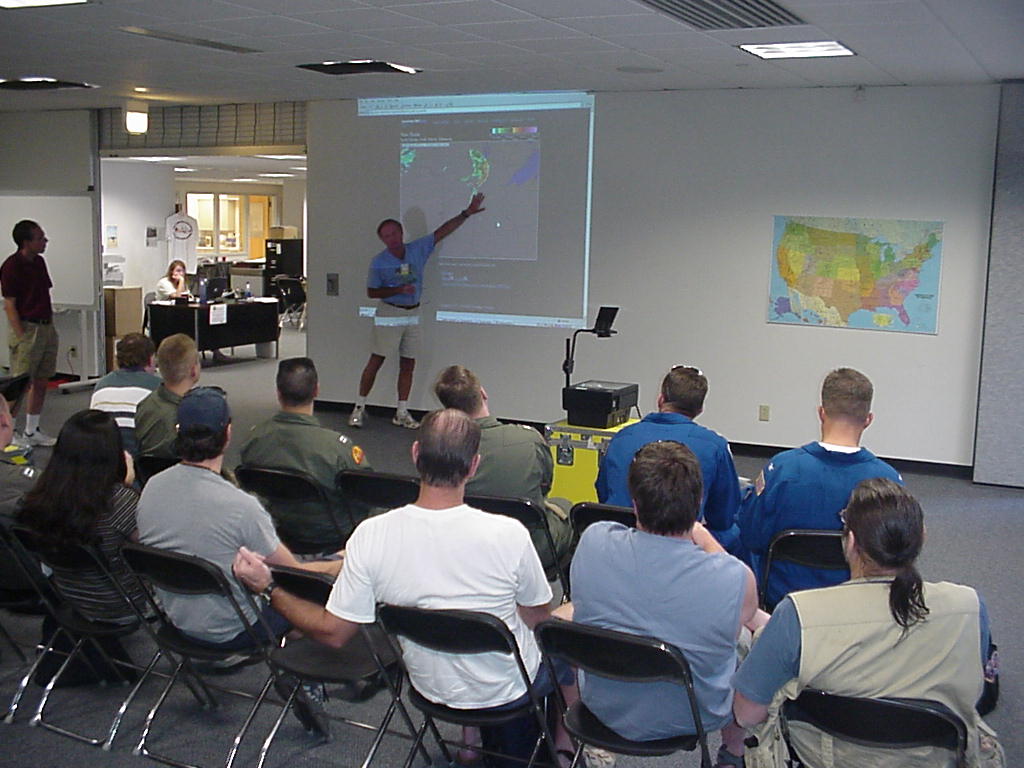BAMEX
Bow Echo and Mesoscale Convective Vortex Experiment 2003
Radar image of an MCV. (Click for full resolution)
The Bow Echo and MCV Experiment (BAMEX) utilized a variety of mobile platforms to examine the life cycles of Mesoscale Convective Systems (MCS). In particular the study was focused on two types of events,
- bow echoes that produce damaging surface winds and last at least for four hours and
- larger convective systems that produce long-lived mesoscale convective vorticies (MCVs).
MCVs can provide a focus for the development of new convection and thus play a key role in multi-day convective events that can affect areas larger than 1000 km in length with heavy and even flooding rains.
Scientific Objectives
For the bow echoes the main objectives include understanding and improving the prediction of the mesoscale and cell-scale processes that produce severe winds. While for MCVs the objectives are to understand their formation processes, their role in initiating and modulating convection, the feedback of convection onto MCV intensity, and to improve the overall predictability of the vortex-convection coupled system.
Facilities
 |
|
The three aircraft participating in BAMEX. (Click for full resolution)
|
To accomplish these research goals BAMEX utilized three research aircraft (two equipped with dual-Doppler radar capability - NOAA P-3 and NRL P-3 - and the third with dropsondes - WMI Learjet) to map the mesoscale evolution of long-lived MCSs including the development of mesoscale vorticies and rear-inflow jets. Dropsondes were used to document the environmental structure, thermodynamic structure of the stratiform region (where rear-inflow jets and MCVs reside) and to capture the structure of mature MCVs in the absence of convection.
BAMEX forecasting meeting
BAMEX also deployed a Ground-Based Observing System (GBOS) consisting of the University of Alabama-Huntsville Mobile Integrated Profiling System (MIPS), two NCAR MGLASS radiosonde systems and one UAH mobile probe vehicle. These were used to document the thermodynamic structure of the boundary layer, including any convergence boundaries, probe the surface cold pool and measure surface horizontal pressure and wind variations behind the leading convective line.
 |
|
The UAH MIPS vehicle. (Click for full resolution)
|
The combination of aircraft and ground-based measurements was important for understanding the coupling between boundary-layer and fre-tropospheric circulations within MCSs and in particular how the rear-inflow penetrates to the surface in nocturnal severe wind cases.
All photos copyright University Corporation for Atmospheric Research unless otherwise noted.
Data Manager:
- EOL Archive NCAR/EOL/DMS

